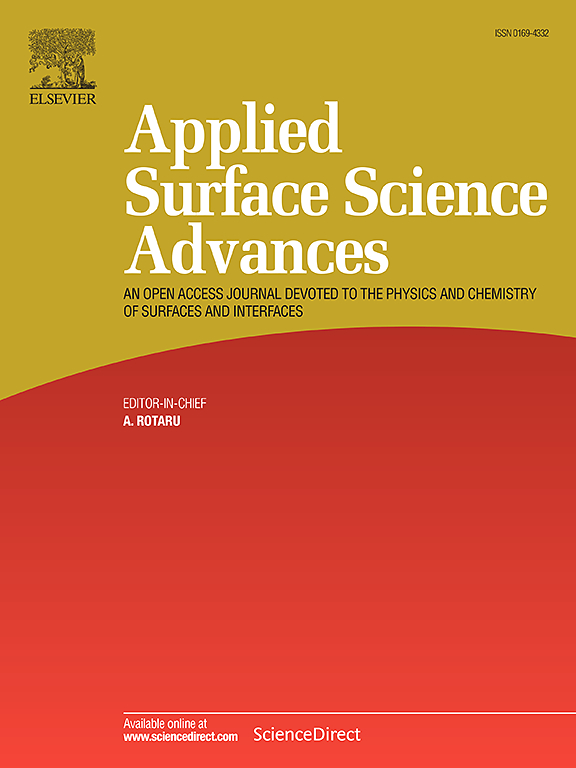Soft magnetic composite obtained by interface reaction upon spark plasma sintering using double-coated Al-permalloy (Ni71.25Fe23.75Al5) composite particles
IF 8.7
Q1 CHEMISTRY, PHYSICAL
引用次数: 0
Abstract
Soft magnetic composite with oxide matrix (mainly alumina) have been prepared by reactive sintering of double-coated Al-permalloy (Ni71.25Fe23.75Al5 wt. %) composite particles. Nanocrystalline Al-permalloy powder have been first superficially oxidized by immersion in HCl solution. Upon oxidizing a thin layer of a mixture of oxides is formed. The Ni71.25Fe23.75Al5@oxide particles have been homogenised with Fe2O3 nanoparticles to obtain double layer coated particles. The as-obtained double coated particles have been densified at 900 °C by spark plasma sintering. Upon sintering, reactions at the interface between the metallic part of the particles and the double-layer of oxides occurs. Al atoms diffused to the particles' outer layer and reacted with the oxides layers, resulting mainly alumina. The microstructure is consisting of metallic Ni-based clusters embedded in alumina matrix. The alumina layer is continuous offering a high electrical resistivity. The interface between the metallic and oxide layer was analysed and discussed. The powder has been characterised by scanning electron microscopy (SEM), X-ray microanalyses (EDX), X-ray diffraction (XRD), Fourier-transformed infrared spectroscopy (FTIR) and the sintered composite compacts by SEM and from magnetic and electric point of views. The characteristics of powder and compacts are discussed and corelated with the process and interface reactions.
采用双包覆Al-permalloy (Ni71.25Fe23.75Al5)复合颗粒,火花等离子烧结界面反应制备软磁复合材料
采用反应烧结的方法,制备了双包覆al - permalalloy (Ni71.25Fe23.75Al5 wt. %)复合颗粒的氧化基(主要为氧化铝)软磁复合材料。将纳米晶al - permalalloy粉末浸泡在HCl溶液中进行表面氧化。氧化后形成一层薄薄的氧化物混合物。将Ni71.25Fe23.75Al5@oxide颗粒与Fe2O3纳米颗粒均质,得到双层包覆颗粒。在900℃的高温下,用火花等离子体烧结对得到的双包覆颗粒进行了致密化处理。烧结后,在颗粒的金属部分和双层氧化物之间的界面处发生反应。铝原子扩散到颗粒的外层,并与氧化物层反应,主要产生氧化铝。其微观结构为嵌套在氧化铝基体中的金属镍基团簇。氧化铝层是连续的,提供高电阻率。对金属层与氧化层的界面进行了分析和讨论。采用扫描电子显微镜(SEM)、x射线微分析(EDX)、x射线衍射(XRD)、傅里叶变换红外光谱(FTIR)对粉末进行了表征,并采用扫描电子显微镜(SEM)、磁学和电学角度对烧结后的复合材料进行了表征。讨论了粉末和压实物的特性,并将其与工艺和界面反应联系起来。
本文章由计算机程序翻译,如有差异,请以英文原文为准。
求助全文
约1分钟内获得全文
求助全文

 求助内容:
求助内容: 应助结果提醒方式:
应助结果提醒方式:


